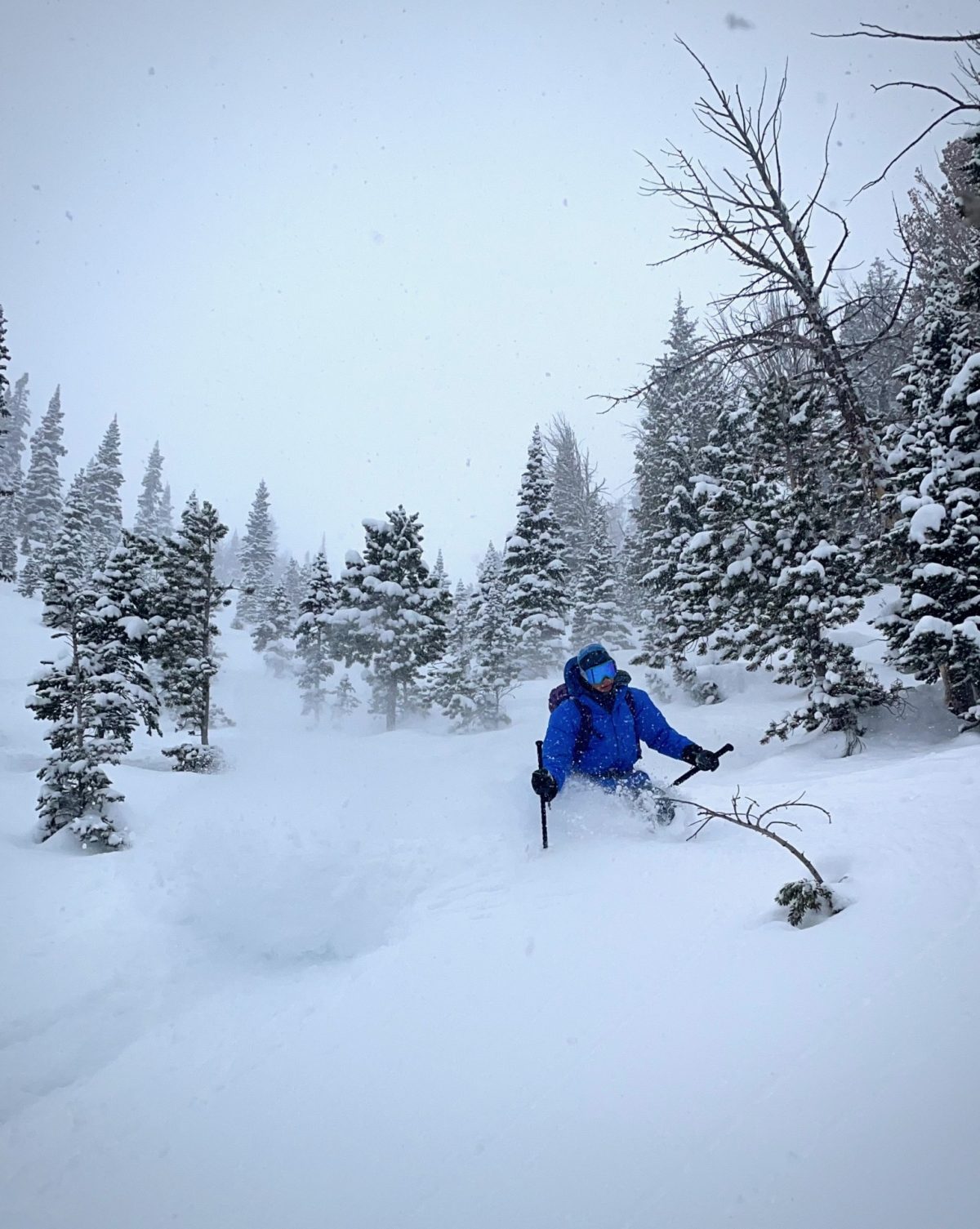
Light and fluffy snow and an Arctic blast to boot. The core stays warm in the Arc’teryx Alpha Lightweight Parka.
The Arc’teryx Alpha Lightweight Parka is a piece to keep you toasty when the pace stalls out on the skinner, flying downhill on the descent, or an emergency bivy is required.
Long ago, not quite 140 million years ago, my parents taught me about compounding interest. There was a lot of “you should do this or that” type of communication. They’re parents; I’m the kid, so it’s OK for me to say things like, “whatever.” But they have a point; compounding interest is a great concept in general.
Front and center, Arc’teryx clothing is pricey. Nothing new there. By extension, the Alpha Lightweight Parka follows in step: it will cost you $800 at full retail. I’m young, nearly 20. So my savings rate …maybe…isn’t what it should be. This means it might take 140 million years for me to save up for a piece like this. (BTW, Arc’teryx is named after the fossil of Archaeopteryx, a creature that inhabited the Earth about … 140 million years ago.)
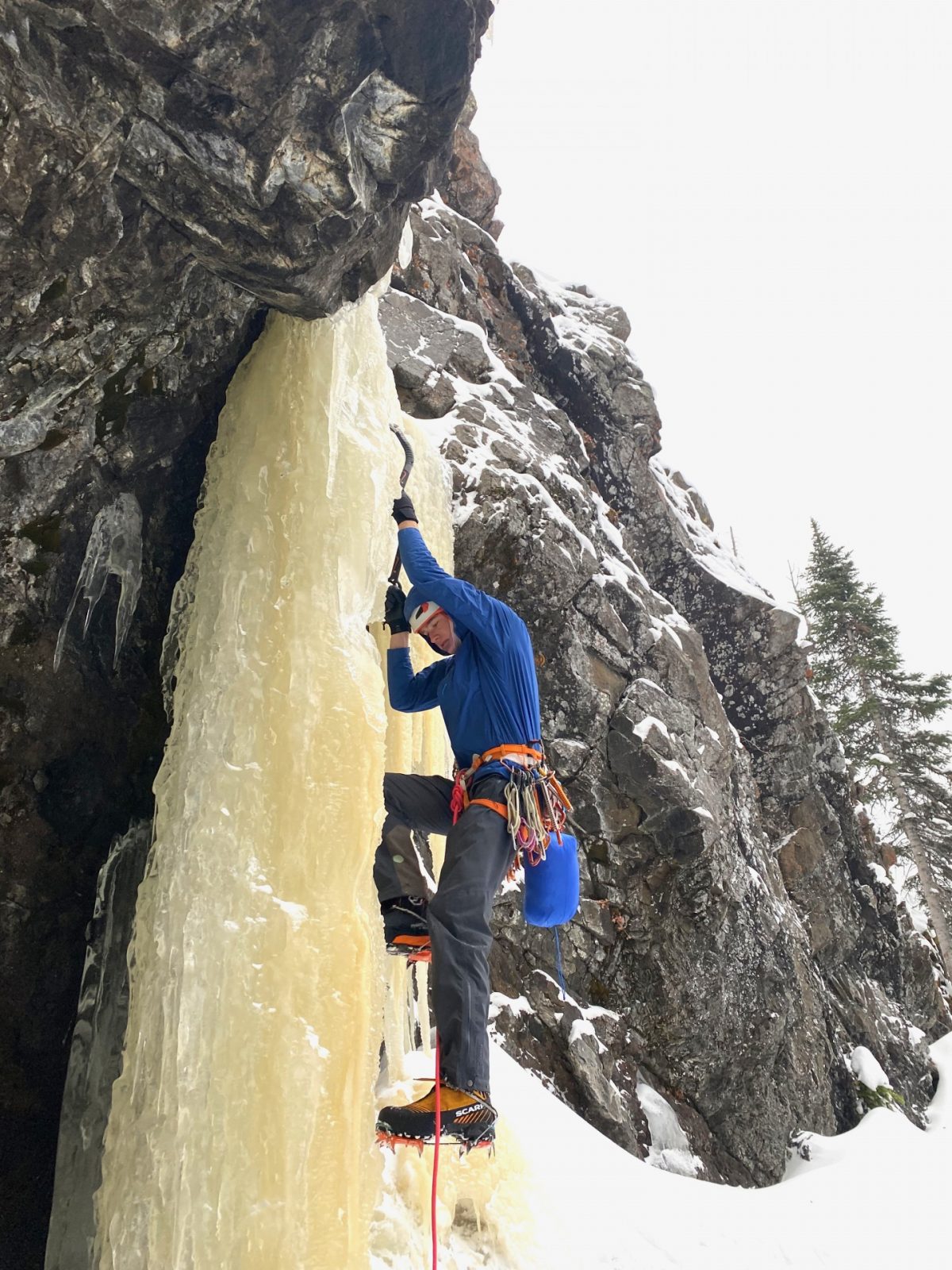
As noted above, the Alpha Lightweight Parka is ready for cold ski tours, and hangin from a harness for the potential shiver belay.
What is the Alpha Lightweight Parka?
It is a confirmed 500g (men’s XL test size), which makes the jacket relatively light. Much of the insulation is 850-fill RDS-certified down (RDS is the Responsible Down Standard), with some synthetic Coreloft insulation in zones throughout the jacket. Arc’teryx claims the Coreloft zones are areas where moisture may build, like the hood, underarms, and neck region. And we all know the rule that synthetic insulation can work even when wet.
I mentioned the cost — high quality down doesn’t come cheap. Yet this is a lightweight jacket insulation-wise relative to the Arc’teryx Alpha or other more expedition-level down pieces. Pinning down the fill weight is tough, but I’ve heard the fill weight is roughly 120g in my size. Don’t do the math, you know, $/g of fill weight. This is a warm jacket, but it is constructed for use in environments a bit warmer than you might experience on a cold Denali day. However, depending on your objective in the Alaska Range; I would consider bringing this jacket. Just know you might want another lighter puffy underneath to broaden the temperature range if a deep freeze goes down.
Part of the jacket’s cost comes from using 2L Gore-Tex INFINIUM, a windproof, relatively breathable at low exertion levels, and water-repellant (note, not proof) material. An FC0-DWR is applied to the outer fabric as well. I’ve used the jacket many times, skiing around Bozeman and climbing in Hyalite. I’m choosing a synthetic jacket if I suspect significant moisture, even despite the Gore-Tex.
Although Gore-Tex is involved, moisture management with an insulating jacket like this is tough. I do skin in the jacket occasionally, but I keep the intensities down and expect to unzip a bit or layer modestly underneath if this is the outermost layer during an uphill jaunt.
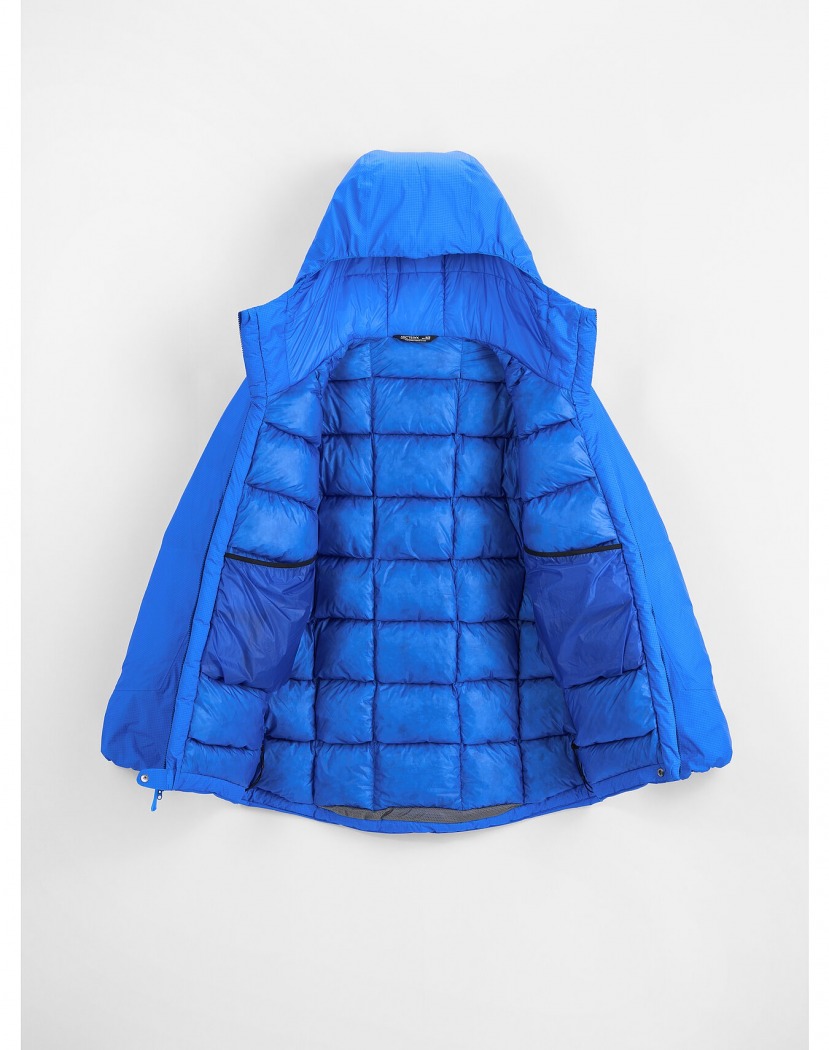
A studio shot from Arc’teryx: the down baffles are nicely organized and not sewn through the face fabric leaving this a draftless and well insulating jacket for many cold weather situations.
Sometimes when using a jacket like this for skiing in trees or climbing rock and ice with the potential for tears, you tend to be preoccupied with shredding the face fabric. I’ve been lucky, but in my experience, (wait for this… I’m not referring to a particle accelerator…. the face fabric is “Proprietary Hadron™ LCP —Liquid Crystal Polymer — grid fabric,”) it has been super durable. All I can say is that this stuff is durable.
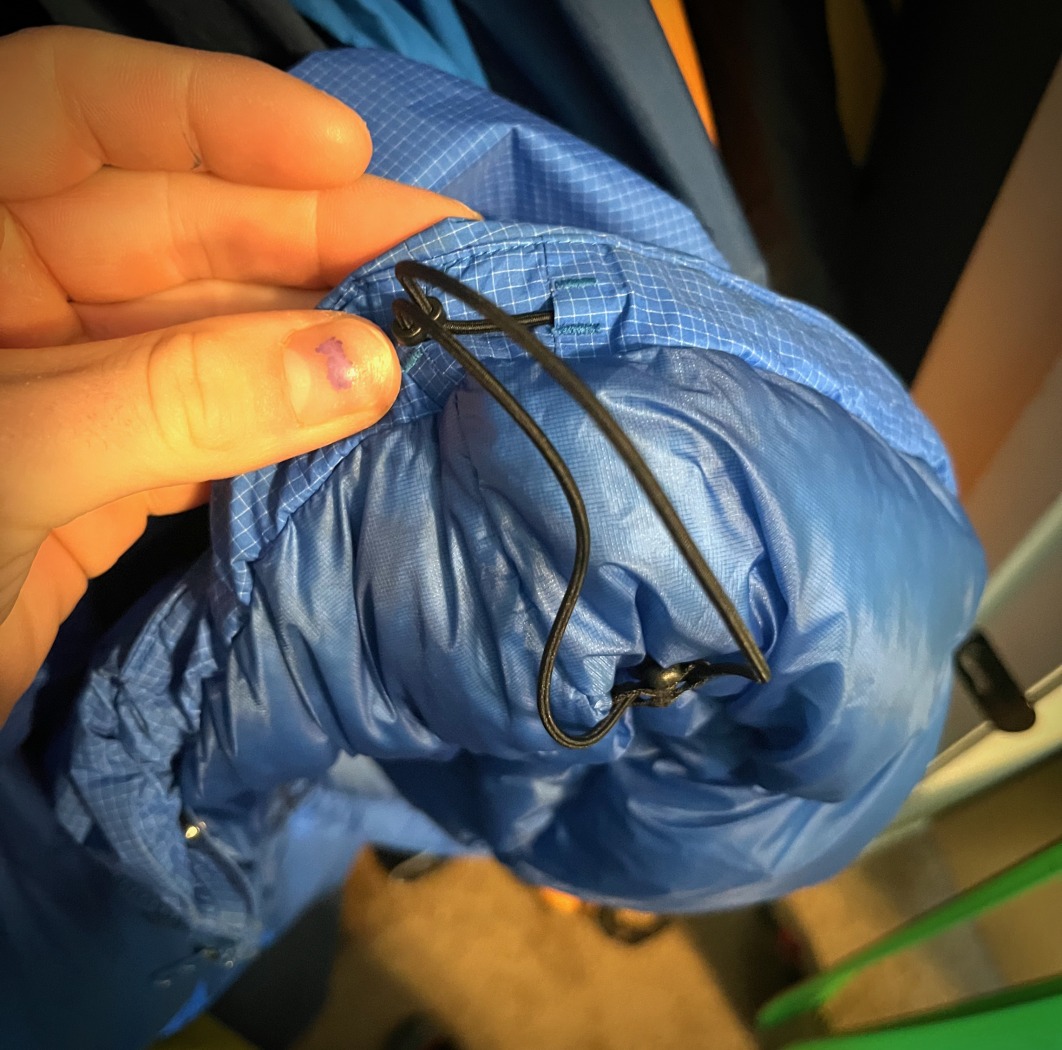
A few items of note: the hem can be cinched tight with an easy to access elastic cord. And…here too you get a good look at the Proprietary Hadron™ LCP (Liquid Crystal Polymer) grid fabric. So far it is durable and pretty cool looking.
Features
As a more technical piece, the Alpha Lightweight Parka has a helmet-compatible hood that is insulated and outfitted with a drawcord. The sleeve cuffs are elastic, with the hem including a cinch cord to batten down the hatches. The two hand pockets have weather-resistant zippers, whereas the chest pocket (right side) can secure a phone. The main zip is two-way but not weatherproof. The hand pockets are functional but, for me, lack the insulation to keep the hands warm on cold days if you are not wearing at least thin gloves.
Internally, two larger drop pockets can house a 1 L Nalgene and most sizable items you are likely to shove inside your jacket.
And the baffles are not sewn through — which is a good thing since sewn-through baffles are cheaper to produce and the jacket is pricey. So far, the down has remained in place, with little, if any, feather loss or migration.
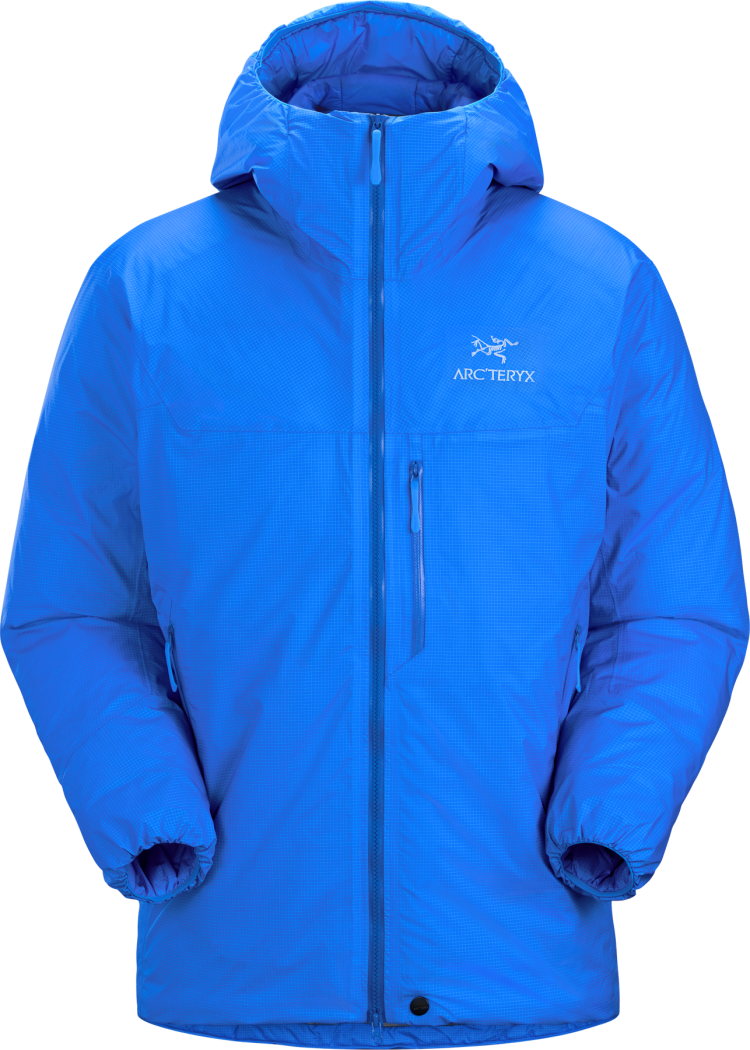
And yes, another studio shot from Arc’teryx. The Alpha Lightweight has a boxier fit which is great for layering, but it does run a bit baggy and large. If you seek something more fitted, maybe size down.
The Fit
Some Arc’teryx pieces are a Euro-fit. You know, that trim look as expressing through your clothing that anything excess will slow you down. The Alpha Lightweight Parka is an anti-fitted piece. It is rather bulky. The upside is that layering items underneath is not a chore: the jacket will swallow up the underlayers, leaving you room to maintain good arm articulation. If you want less bulk, try sizing down. I’m tall and semi-skinny: 6’4″ and 170 pounds. For comparison, I fit great in size large Patagonia AlpLoft down jacket.
Closing Thoughts
In the time it took to get my thoughts down in a Google doc, let’s assume the market went up, some time went by, and my bank account fattened a bit. The $800 upfront costs for the Alpha Lightweight Parka may be nothing but an eyeblink for some. For others, consider a jacket like this to be an investment. Let’s assume with proper care and a good patch kit (over time, you for sure will rip/tear any jacket), you can have this for a decade or more. Then the upfront costs for a good-looking parka like this might be in your future.
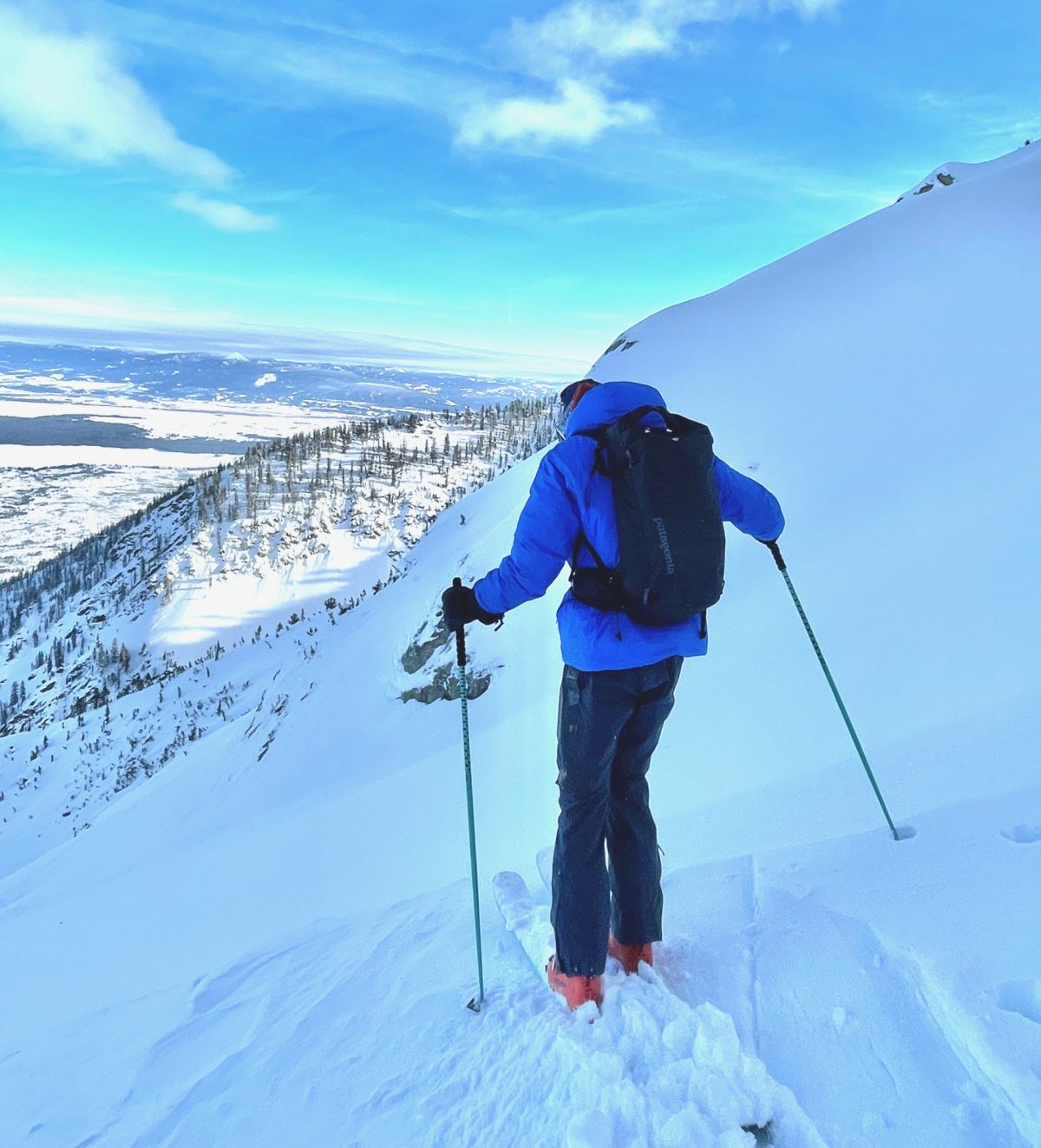
Low winter light and some cold temps. A perfect time to use the Alpha Lightweight Parka. Save your $$.
This piece is functional as a safety item in the pack on very cold winter days or a jacket you might wear over the whole kit while descending to keep the drafts out and the heat in. As mid-day lunch stop insulation while touring, it’s also a great piece. You already know this, too; if the sticker shock is too shocking, you can find down insulation at lower prices.
Shop for the Arc’teryx Alpha Lightweight Parka.
Aidan is a student at Montana State University and thanks his parents daily, just because.
